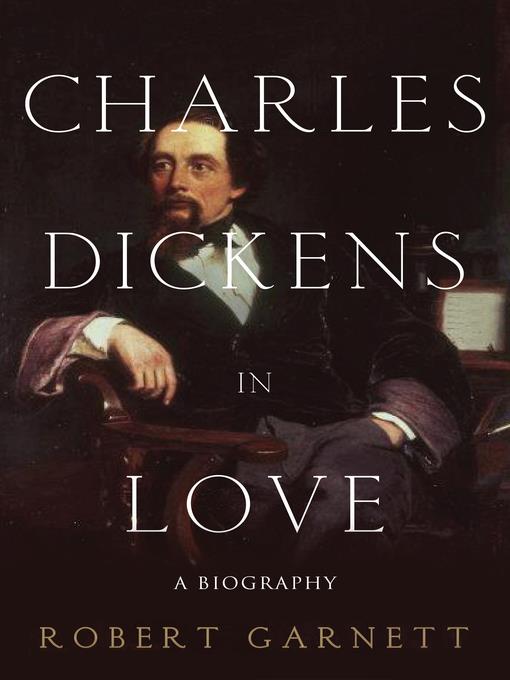
Charles Dickens in Love
کتاب های مرتبط
- اطلاعات
- نقد و بررسی
- دیدگاه کاربران
نقد و بررسی

August 20, 2012
In this well-researched biography, Gettysburg College English professor Garnett analyzes Dickens's love life and its effect on his masterful novels and legendary career. Though it is well known that his greatest passion was for Mary Hogarth, the younger sister of his former wife, Garnett begins with the story of the writer's earliest sweetheart, Maria Beadnell. While most biographers claim that Beadnell had little impact on Dickens's career, Garnett argues that Beadnell "âhad pervaded every chink and crevice'" of the young man's mind and asserts that, when Dickens's hopes were dashed, "writing replaced wooing." From there, Garnett addresses Hogarth in greater detail and reveals the origins of that romance. Garnett suggests that both relationships inspired aspects of David Copperfield, ensuring that both women are forever part of his legacy. Deftly intertwining details of Dickens's personal history with a discussion of his writing, this is both an intriguing and romantic account. Illus.

October 1, 2012
A detailed and well-documented but limited account of the great loves of Charles Dickens (1812-1870). In his debut, Garnett (English/Gettysburg Coll.) combines scholarly detective work, biographical criticism and imagination to show how Dickens' three major romantic attachments would shape his life and art. The first was Maria Beadnell, the local rich girl who spurned him; on the rebound, he married Catherine Hogarth, who had nothing in common with him (except the 10 children she would go on to bear him). It was Catherine's younger sister, the delicate Mary, who became his next obsession; her death at 17 made her, for Dickens, an immortal vision of angelic purity. Both Mary and Maria would appear in David Copperfield as the polar opposites of the title character's love life. Garnett devotes most of his book to Dickens' longtime affair with the young actress Ellen "Nelly" Ternan, an open secret to his close intimates but one strenuously concealed from the Victorian world. Although the story has been told before, Garnett maps out this lengthy liaison in close detail, based on a mountain of circumstantial evidence from Dickens' coded diaries, novels and whatever wasn't censored from his surviving correspondence. Although the author makes a credible case that Ellen was the true love of the writer's life, he doesn't tell the whole story. Catherine is all but absent from the book, and Garnett says little about how Dickens' selfish behavior throughout this episode would alienate his children. A wealth of entertaining information in an ultimately incomplete account.
COPYRIGHT(2012) Kirkus Reviews, ALL RIGHTS RESERVED.

September 15, 2012
Charles Dickens has often been criticized for his depictions of women, but, in his new study, Garnett (English, Gettysburg Coll.) shows that many of the women and girls in Dickens's fiction in fact reveal his idealization of feminine goodness, a trait he idolized with an ardor nearing religiosity. Garnett gives readers more than a glimpse of the prolific author's private life and the real women he loved, demonstrating that these living amours often inspired his virtuous heroines. Dickens's long-suffering wife, Catherine, however, makes few appearances in this volume, whereas Garnett's coverage of Dickens's liaison in his later years with young actress Ellen Ternan is exhaustive, albeit conjectural. The analysis of Dickens's real-life romantic interests, also including his first love, Maria Beadnell, and his wife's sister, Mary Hogarth, as inspirations for his maidenly protagonists, is insightful and engaging. Readers interested in following the trend of books that delve into the love lives of famous authors may also be interested in A.N. Wilson's Dante in Love, William C. Carter's Proust in Love, or Edna O'Brien's Byron in Love. VERDICT Beginning Dickens scholars, as well as anyone who has read his novels and come away skeptical about his views of women, will find this a revealing study of a passionate wordsmith.--Lara Jacobs, Brooklyn, NY
Copyright 2012 Library Journal, LLC Used with permission.

Starred review from October 15, 2012
Four graves mark the conclusion of Garnett's probing bioliterary study: the famous tomb of Charles Dickens' in Westminster Abbey and the largely forgotten graves of three women who forever left their mark on Dickens' books. The influence of these women indeed validates the judgment of an American visitor to the author: A man must have really loved a woman if he would fully interpret the secrets of a woman's heart. The first of the women Dickens really loved, Maria Beadnell, spurned Dickens' youthful advancesyet impressed upon his imagination the lineaments of Estella in Great Expectations. The second female inspiration in Dickens' life, Mary HogarthDickens' sister-in-lawdied young, in Dickens' arms. Her saintly image shines forth in Agnes in David Copperfield. But Garnett devotes his most sustained inquiry to the love interest in Dickens' life that has long been shrouded in shadows: Ellen Ternan, the young actress with whom Dickens' developed a carefully concealed relationship. In Ternan, Garnett discerns the wellspring of the turbid but potent impulses that flow through Dickens' most complex female characters: Lizzie in Our Mutual Friend and Helena in the unfinished The Mystery of Edwin Drood. Singular scholarship teases out of tangled loves the sources of rare art.(Reprinted with permission of Booklist, copyright 2012, American Library Association.)

























دیدگاه کاربران